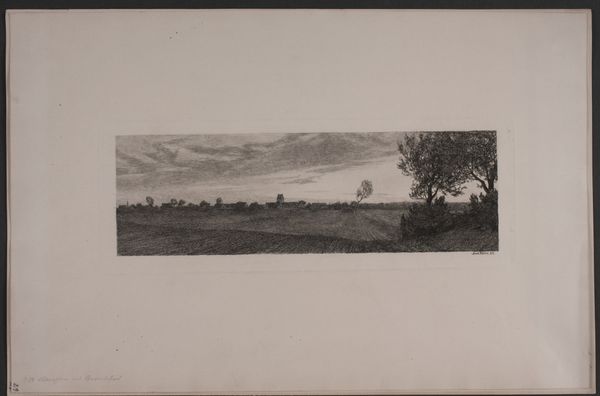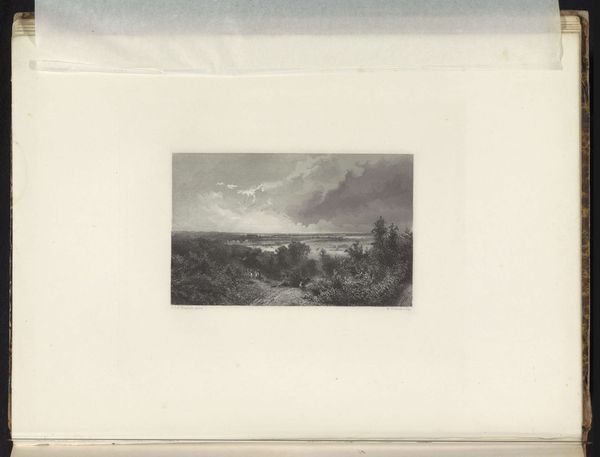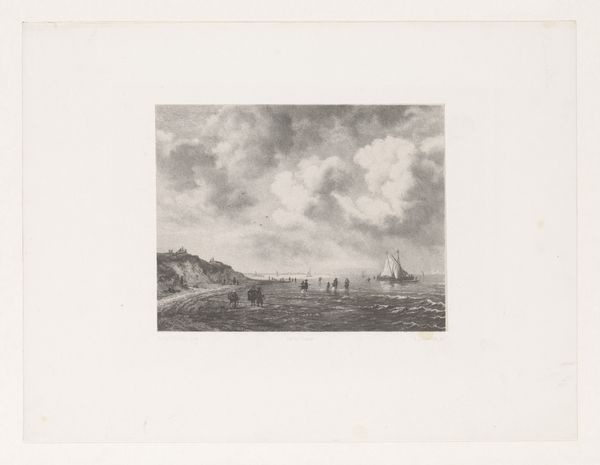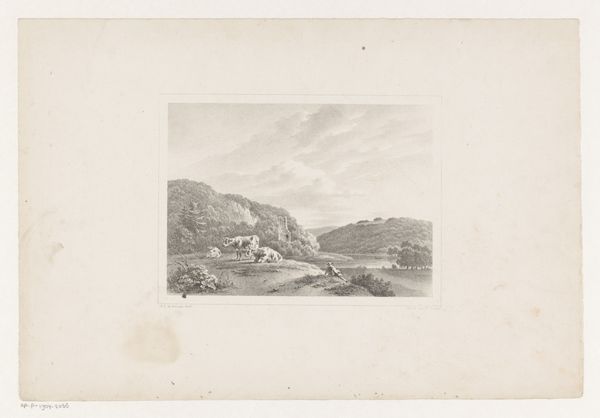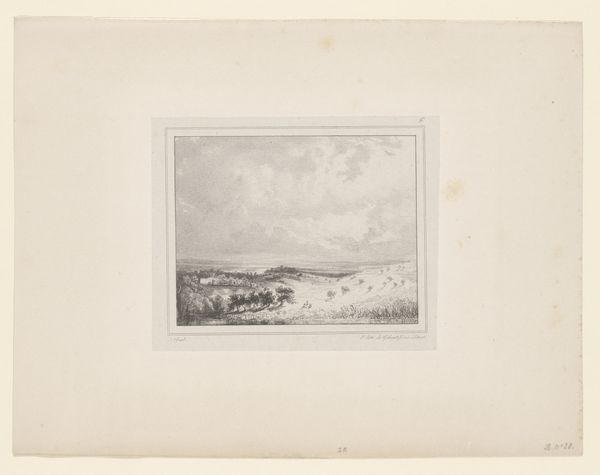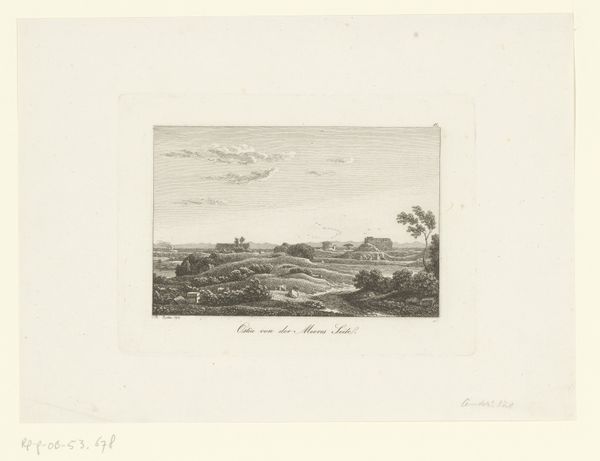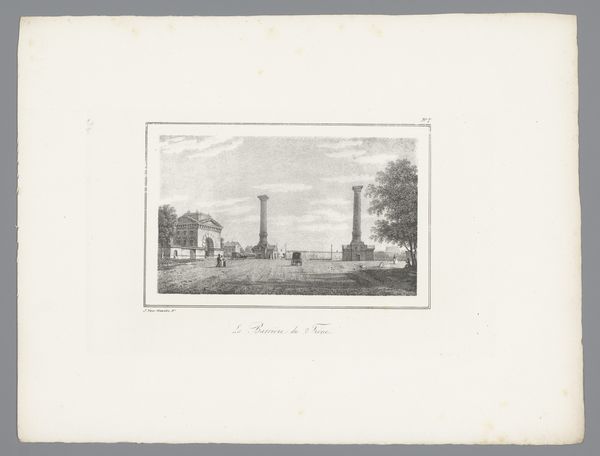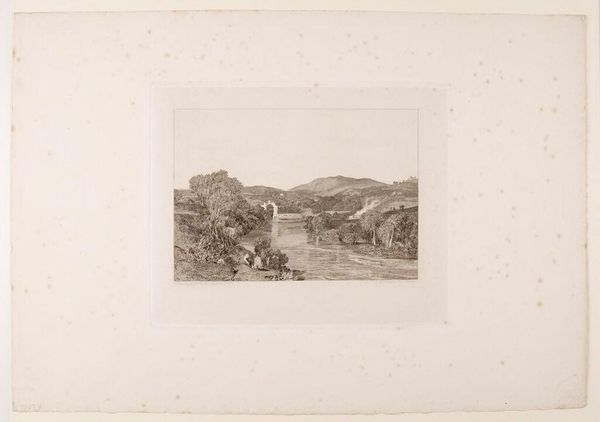
Germaanse woning op een terp, uit de Romeinse tijd 1865 - 1870
0:00
0:00
print, etching
# print
#
etching
#
landscape
#
realism
Dimensions: height 200 mm, width 250 mm
Copyright: Rijks Museum: Open Domain
Curator: This etching by Christiaan Lodewijk van Kesteren, titled "Germanic House on a Mound, from Roman Times," dating from around 1865-1870, offers a fascinating glimpse into imagined early Germanic life. Editor: It has a quiet, almost melancholic atmosphere. The landscape feels vast, dwarfing the figures. What do you find most striking about the depicted setting? Curator: What intrigues me is the choice to represent a Germanic dwelling within the context of Roman times. This situates it within a complex power dynamic. How did Van Kesteren envision the relationship between these cultures, and how does it reflect the emerging nationalistic sentiments of his own time? Editor: From a material perspective, the etching technique allows for incredibly fine detail. The cross-hatching creates a range of textures, from the rough grasses in the foreground to the cloudy sky above. There’s a real sense of depth created through the controlled manipulation of light and shadow. Curator: Absolutely, and that mastery of technique invites us to consider who is present in the scene, and who is notably absent. The figures appear as rural folk in a bucolic image but they should also prompt a question of historical perspective and the colonial lens used to frame marginalized groups. Editor: Considering Van Kesteren worked primarily with printed media, this work must speak to ideas of artistic production accessible to the wider public, not just a privileged class of fine art consumers. What message might that accessibility convey? Curator: I think you’re right; it pushes art away from purely aesthetic enjoyment and positions it as a tool to inspire discussion about identity, history, and the narrative around these early cultures. Perhaps even encouraging people to question dominant historical narratives. Editor: Ultimately, viewing art objects such as "Germanic House on a Mound, from Roman Times," and paying close attention to the artist's process opens an invitation to engage in challenging but very important perspectives on our culture’s social past. Curator: Exactly, this is what makes engaging with historical artworks such a potent way of analyzing our own present. The act of imagining an earlier way of living has the potential to both challenge and solidify identity and ideas in society.
Comments
No comments
Be the first to comment and join the conversation on the ultimate creative platform.

